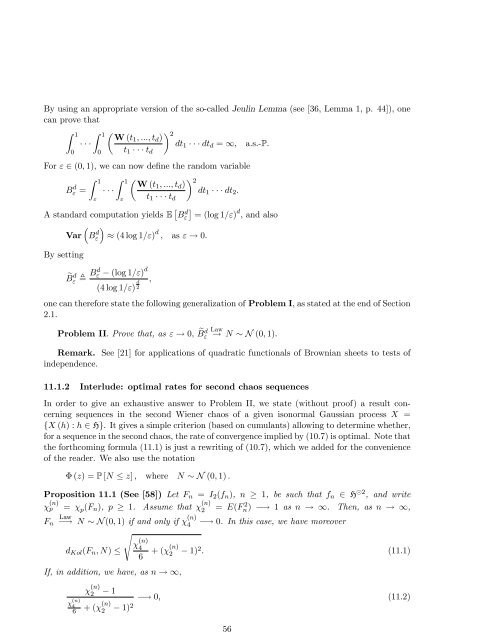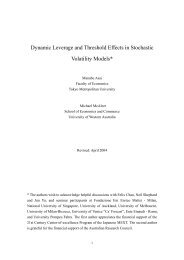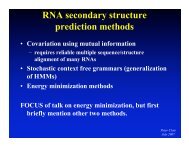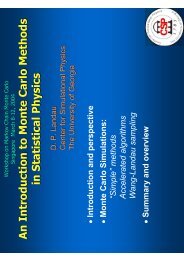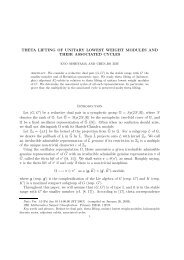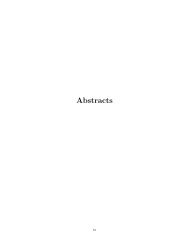Stein's method, Malliavin calculus and infinite-dimensional Gaussian
Stein's method, Malliavin calculus and infinite-dimensional Gaussian
Stein's method, Malliavin calculus and infinite-dimensional Gaussian
You also want an ePaper? Increase the reach of your titles
YUMPU automatically turns print PDFs into web optimized ePapers that Google loves.
By using an appropriate version of the so-called Jeulin Lemma (see [36, Lemma 1, p. 44]), one<br />
can prove that<br />
Z 1 Z 1<br />
W (t1 ; :::; t d ) 2<br />
<br />
dt 1 dt d = 1, a.s.-P.<br />
t 1 t d<br />
0<br />
0<br />
For " 2 (0; 1), we can now de…ne the r<strong>and</strong>om variable<br />
Z 1 Z 1<br />
W<br />
B" d (t1 ; :::; t d ) 2<br />
= <br />
dt 1 dt 2 :<br />
t 1 t d<br />
"<br />
"<br />
A st<strong>and</strong>ard computation yields E B" d <br />
= (log 1=") d , <strong>and</strong> also<br />
<br />
Var B"<br />
d (4 log 1=") d , as " ! 0:<br />
By setting<br />
eB " d , Bd " (log 1=") d<br />
,<br />
(4 log 1=") d 2<br />
one can therefore state the following generalization of Problem I, as stated at the end of Section<br />
2.1.<br />
Problem II. Prove that, as " ! 0, e B d "<br />
Law<br />
! N N (0; 1).<br />
Remark. See [21] for applications of quadratic functionals of Brownian sheets to tests of<br />
independence.<br />
11.1.2 Interlude: optimal rates for second chaos sequences<br />
In order to give an exhaustive answer to Problem II, we state (without proof) a result concerning<br />
sequences in the second Wiener chaos of a given isonormal <strong>Gaussian</strong> process X =<br />
fX (h) : h 2 Hg. It gives a simple criterion (based on cumulants) allowing to determine whether,<br />
for a sequence in the second chaos, the rate of convergence implied by (10.7) is optimal. Note that<br />
the forthcoming formula (11.1) is just a rewriting of (10.7), which we added for the convenience<br />
of the reader. We also use the notation<br />
(z) = P [N z] , where N N (0; 1) :<br />
Proposition 11.1 (See [58]) Let F n = I 2 (f n ), n 1, be such that f n 2 H 2 , <strong>and</strong> write<br />
(n)<br />
p = p (F n ), p 1. Assume that (n)<br />
2 = E(Fn) 2 ! 1 as n ! 1. Then, as n ! 1,<br />
Law (n)<br />
F n ! N N (0; 1) if <strong>and</strong> only if 4 ! 0. In this case, we have moreover<br />
s<br />
(n)<br />
4<br />
d Kol (F n ; N) <br />
6 + ((n) 2 1) 2 : (11.1)<br />
If, in addition, we have, as n ! 1,<br />
(n)<br />
2 1<br />
! 0; (11.2)<br />
(n)<br />
4<br />
6<br />
+ ( (n)<br />
2 1) 2<br />
56


